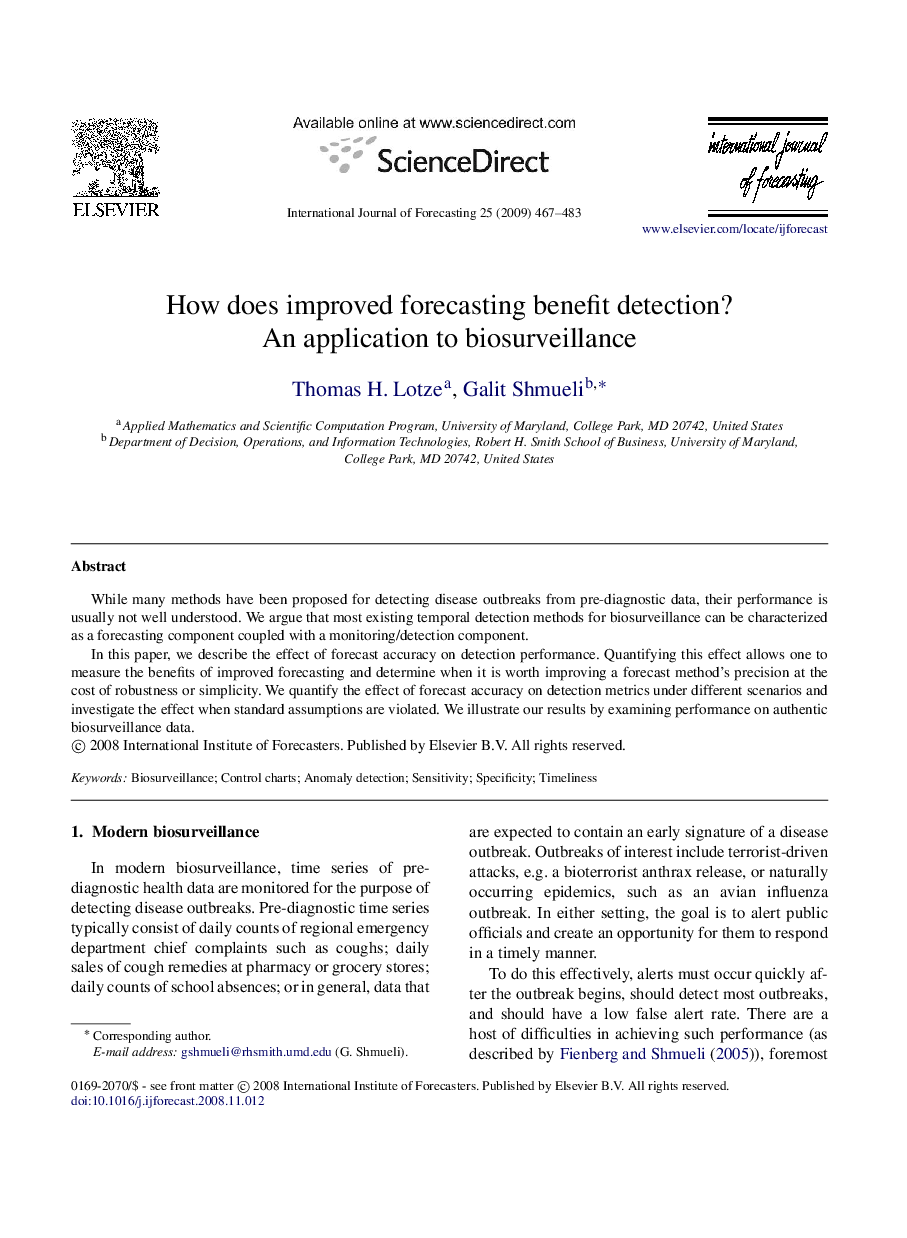| Article ID | Journal | Published Year | Pages | File Type |
|---|---|---|---|---|
| 997777 | International Journal of Forecasting | 2009 | 17 Pages |
While many methods have been proposed for detecting disease outbreaks from pre-diagnostic data, their performance is usually not well understood. We argue that most existing temporal detection methods for biosurveillance can be characterized as a forecasting component coupled with a monitoring/detection component.In this paper, we describe the effect of forecast accuracy on detection performance. Quantifying this effect allows one to measure the benefits of improved forecasting and determine when it is worth improving a forecast method’s precision at the cost of robustness or simplicity. We quantify the effect of forecast accuracy on detection metrics under different scenarios and investigate the effect when standard assumptions are violated. We illustrate our results by examining performance on authentic biosurveillance data.
